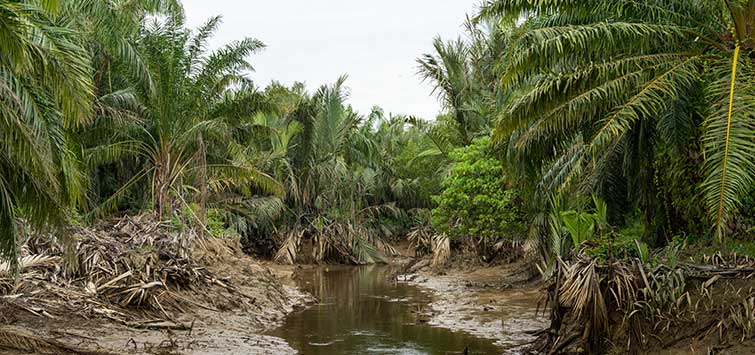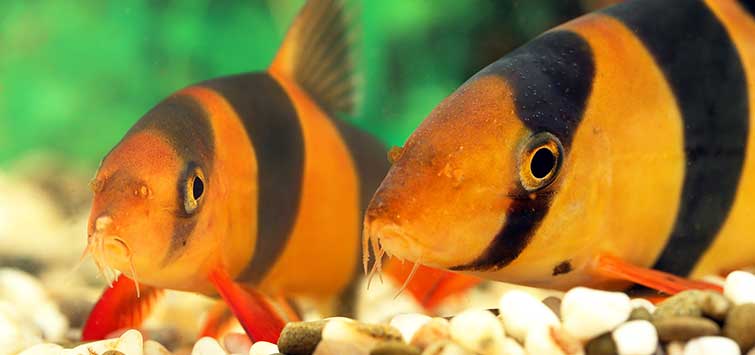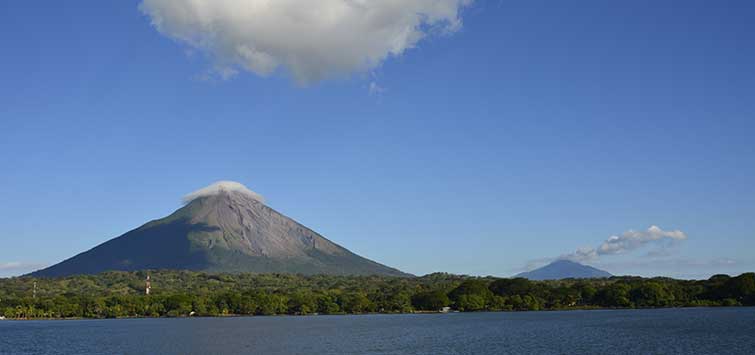Collecting in the Swamps of Peninsular Malaysia
Author: Lo Shiang Huei (Michael Lo)
A peat swamp isn't the most attractive locale for collection, but sometimes you have to get your hands dirty (and legs wet) for some of the more fascinating species. One of TFH's favorite explorers traverses the blackwater swamps of Malaysia for a variety of enchanting species—one of which happens to fit on the tip of your finger with plenty of room to spare!
Cryptocoryne In Our Sight
In the middle of the 2006 dry season, a group of Orang Asli (indigenous people from Peninsular Malaysia) went to a freshwater swamp to catch snakeheads for dinner and found an unidentified species of aquatic plant growing abundantly in the swamp. One of my friends, Herman, heard the news and went to investigate, then later informed me that it was a species of Cryptocoryne.
Into Kuala Lumpur
In late 2006, I booked an airline ticket and flew to Kuala Lumpur from my hometown of Kuching. After arriving at the airport, I took a train to the northern part of Kuala Lumpur to meet Herman, who was waiting for me at the station. By the time I threw my backpack into Herman’s car, bad weather had moved in, and it rained for half an hour. It was a bad idea to go to the swamp during the rainy season, as the water level would be very high. Recently, the southern region of Peninsular Malaysia was hit badly by a flood caused by a continuous downpour that lasted for more than 24 hours!
When the rain stopped, both of us (and another friend) went to a new housing estate near Kuala Lumpur city. Herman told me that the whole area used to be a big forest reserve. Due to development, the size of the reserve has been reduced to less than 50 percent of its original size. The environmentalists and nonprofit organizations are trying their best to persuade the local government to keep this last patch of rainforest from being replaced by the concrete jungle.
Swamp Things
We spent 20 minutes walking past the dense lowland forest before reaching a freshwater swamp. The first creature to greet us was a green-colored snake called the oriental whip snake, which was resting on a shrub near the swamp. Not far away, the swamp had been overgrown by a species of aquatic plant. When I walked into the swamp, I could see green and deep-purple colored Cryptocoryne growing abundantly, submerged. I was stunned to see this beautiful natural water garden. A researcher in Europe later informed me that this plant was a variety of Cryptocoryne minima. I took as many photos as possible before leaving. I hope this beautiful place remains intact for future generations to explore.
Exploring With Dzul
Two days later, I met a local fishkeeper named Dzul, who is the president of the Betta Society of Malaysia. Dzul is an experienced hobbyist who knows almost all the locations of wild fighting fishes in Peninsular Malaysia. It was a great honor to have him as my guide for collecting Betta livida in the peat swamp of western Peninsular Malaysia. After three hours of driving on a coastal road, Dzul parked his car at a roadside near a blackwater canal. I could see the undisturbed peat swamp forest on both sides of the tarred road. The water in the swamp and canal was black in color, caused by peat soil slowly releasing tannins and organic acids into the water.
We do not know how long this swamp will remain undisturbed by humans. Dzul and other fish hobbyists are playing an important role in keeping and breeding exotic fishes from this swamp. The fish-breeding program has ensured that those rare species of wild fishes such as B. livida will not face complete extinction when the bulldozers move in to clear the swamp for plantations.
Dzul put on a wetsuit and plastic boots and went into the edge of the swamp to collect the blackwater fishes. Since I forgot to bring my wetboots, I walked along the roadside to find a perfect spot to look for the red-colored dwarf fighting fish B. livida, a 2-inch fish belonging to the B. coccina group that mostly inhabits the shallow part of the swamp. A few minutes later, I found a small blackwater stream where the water was flowing very slowly. I pushed my fishnet into the leaf litter and scooped it up. “Got it!” I yelled to Dzul. A few small reddish-colored fish with slender bodies jumped in my net. It was B. livida!
Abundant Catch
I later went to the deeper part of the swamp and caught a bigger Betta called B. hipposideros. I also caught Neohomaloptera johorensis, Mystus bimaculatus, Sphaerichthys osphromenoides, and Puntius hexazona. Dzul was a bit disappointed, as he only managed to collect two Parosphromenus harveyithere. According to Dzul, this collection point was well known by a few commercial fish collectors, and they were probably responsible for the area’s low fish population. We decided to move on to another location about 2 km (1 mile) away. This time, he caught a lot of colorful P. harveyi under the submerged vegetation at the blackwater canal.
While I was photographing the swamp, I noticed a school of what I thought was fish fry swimming near me. I kneeled down to get a closer look and was excited to find that it was an undescribed species of miniature fish of the Paedocypris genus. It is one of the smallest fishes in the world! It is slightly smaller than Paedocypris micromegethes, which I had collected in the peat swamp of Sarawak a few years back. It did not swim very fast, and I managed to use my hand to catch one, place it on my fingertip, and take a photograph for my records before releasing it back. In the past, these miniature fishes were overlooked by most people, as the adult’s body length is less than 1 cm (1/3 inch). It wasn’t until very recently that a scientist from Singapore discovered that Paedocypris progenetica from the peat swamp of Sumatra (a closely related species to the one I found) is in fact the smallest vertebrate in the world!
The poorly drained, acidic swamps of Southeast Asia are full of beautiful and interesting aquatic flora and fauna. However, these flooded forests are disappearing quickly due to the development and land conversion for agricultural use. I hope to spend more time visiting and photographing the ecosystem of these swamps in the near future before it is gone forever.
References
Bastmeijer, J. D. 2007. “Cryptocoryne.” The Crypts Pages: www.nationaalherbarium.nl/Cryptocoryne/index.html
Beamish, F. W. H., R. B. Beamish, and S. L. H. Lim. 2003. “Fish Assemblages and Habitat in a Malaysian Blackwater Peat Swamp.” Environmental Biology of Fishes 68:1–13.
Kottelat, M., A. J. Whitten, S. N. Kartikasari, and S. Wirjoatmodjo. 1993. Freshwater Fishes of Western Indonesia and Sulawesi. Periplus Editions, HK. 344 pp.
Kottelat, M., R. Britz, H. H. Tan, and K. E. Witte. 2006. “Paedocypris, a new genus of Southeast Asian cyprinid fish with a remarkable sexual dimorphism, comprises the world’s smallest vertebrate.” Proceedings - Royal Society of London, Biological Sciences 273:895–899.
Ng, H. H., and H. H. Tan. 1999. “The Fishes of the Endau Drainage, Peninsular Malaysia with Descriptions of Two New Species of Catfishes (Teleostei: Akysidae, Bagridae).” Zoological Studies38:350–366.
Polunin, I. 1988. Plants and Flowers of Malaysia. Times Editions, Singapore. 160 pp.
Tan, H. H., and P. K. L. Ng. 2005. “The Fighting Fishes (Teleostei: Osphronemidae: genus Betta) of Singapore, Malaysia and Brunei.” The Raffles Bulletin of Zoology 13:43–99.
Tan, H. H., and P. K. L. Ng. 2005. “The Labyrinth Fishes (Teleostei: Anabantoidei, Channoidei) of Sumatra, Indonesia.” The Raffles Bulletin of Zoology 13:115–138.
See the full article on TFH Digital

.png?h=595&iar=0&w=2781&hash=5FD5E69473BCC22199FBFA2FB71B6033)



